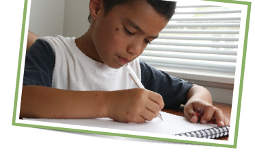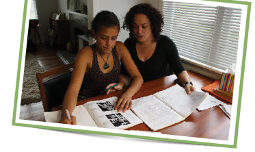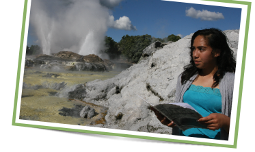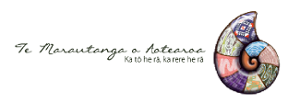Ko tētahi o ngā mea kawa kua puta i te mimititanga nei, i te ngarohanga atu o te kōrerotia o te reo i roto i ngā hapori, i ngā whānau, ko te tere huri nei ki reo kē, ki whakaaro kē, ki tikanga kē. Nā runga anō i te ahunga o te reo ka kawea hoki i te tikanga i roto i taua reo. Nō reira ka waiho atu te reo Māori ki te taha ka huri ki te whai i te reo Pākehā, kāore e kore ko te tikanga Pākehā hoki ka haere ngātahi atu ki roto i ngā mahi a taua whānau. Nō reira ko te pananga atu i te reo i roto i tētahi hapori, i roto i tētahi whānau kei te āhua pana anō ko ngā tikanga whakahaere, tō rātou mōhiotanga ki te ao. Ka huri ki roto ki iwi kē, ki whakaaro kē, ki tikanga kē. Ki a au nei ka pōhēhē te tangata ko wai ia i roto i tēnei ao, ka riro i whakaahua kē, i whakaaro kē.
Kua nui anō ngā iwi kāore anō kia piki ki runga i tēnei waka. Tērā anō pea kāore anō kia kite i te huarahi tika e piki ai rātou, e haere tahi ai rātou me te iwi nei i runga i tēnei kaupapa o te whakarauora reo. Kei te tika tērā i te mea he uaua, ehara i te mea māmā te whakarauora i te reo. Ki ētahi kei te pai, kōrerotia te reo koirā anake te rongoā, koirā anake te whakarauora. Ki a au nei he patu ngākau ērā momo kōrero i runga i te mea he nui ngā piki, ngā heke o ia rā, o ia rā, o te whakamātau i tēnei rautaki, ngā wero mai i ētahi tangata kūare, kaha tohe mai ki a koe … Nō reira he nui ngā mea e takatakahia ana i tō kaha, i tō hiahia ki te whai i tēnei huarahi. Tuatahi. Tuarua ko te mārama ki te huarahi e tika ana kia whāia. Nō reira ki te kore koe e mārama he aha te painga o tēnei i tēnei, ka whai noa iho nei ki te tohutohu mai o te kāwanatanga, i te mea kei a rātou kē te māramatanga, kei a rātou te rauemi.
Te tuatoru, ko tētahi o ngā tino raru ka aro rawa ki te reo Māori. Ka pōhēhē pea ko te mahi tuatahi o te mahi whakarauora reo i roto i te iwi, ko te haere ki te rangahau i te reo o taua iwi. Ka pau te rima tau, tekau tau, e rangahau ana e rapu pukapuka ana, e kohikohi ana i te reo Māori, i ngā kupu, i ngā rerenga. Engari kāore anō kia tino tuku i ērā rauemi ki ngā wāhi e tika ana. Ko te oranga o te reo ā-iwi, ko te oranga i roto i tētahi hapori, i roto i ētahi whānau e pūmau ana ki te kaupapa. Nō reira ko te hīkoi, te hōkai tuatahi nei, i runga i tēnei huarahi, ko te pikitanga i runga i te waka. Ko te pātai kei hea te hapori i roto i te iwi? Ētahi o ngā hapori kāre i te kōrero Māori, kei te pai. He aha tō mahi, he aha te mahi o te iwi kia reo Māori ai aua mahi? Mehemea he kapa haka tō te iwi nei ka pai, me pēhea e reo Māori ai te mahi o te kapa haka? Ko te waka ama, ko te aha rānei me tīmata te piki i te reo Māori i roto i ngā mahi o te hapori. He aha tērā mea e korikori ai te iwi? Mehemea ka tatari kia tae mai te kāwanatanga me tēnei tohu kia piki ki runga i tēnei wānanga kia whai tohu i te mutunga, kia matatau te tangata, kātahi ka kī, ‘Ā, kua ora te reo Māori ki roto i te tangata.’ Kāore anō te reo Māori kia ora ki roto i taua iwi. Kua ora ki roto i te tangata kotahi. Te nuinga o ngā tāngata ka piki te matatau, kātahi kāre i te whai hoa kōrero. Kāre e roa ka mimiti tērā taha ki roto i a ia, ka hoki anō ki tērā āhuatanga o te mataku ki te kōrero Māori. Nō reira ko te wero tuatahi pea ki ngā iwi, me pēhea e tō atu ai te hapori, te whānau kia reo Māori tō rātou piringa. Koirā te wero nui. Ana, mō ngā tāngata e mahi ana ēnei mahi, ka mōhio kātahi ko tētahi mahi uaua rawa atu, ko tērā. Ko te whakapiri i tētahi whānau kia pūmau, kia pono tahi, kia tautoko tahi, kia ū rawa atu ki tēnei mea, te kōrero i te reo Māori. I runga i te mea he nui ngā piki, engari he nui anō ngā heke, ngā wero, ngā mea e takahi ana i te kaha o taua whānau. Nō reira kia piri, kia ū, kia hipa aua taiepa, aua pātū pea ka tū ki mua i a rātou i ngā tau e whai muri nei. Mō ngā iwi e whakaaro pēnei ana ki te whai i tēnei huarahi, kōkirihia. Engari i te tuatahi me āta wānanga ko wai te hapori. Koirā taku whakaaro nei e tika ana kia horaina i tēnei wā.
